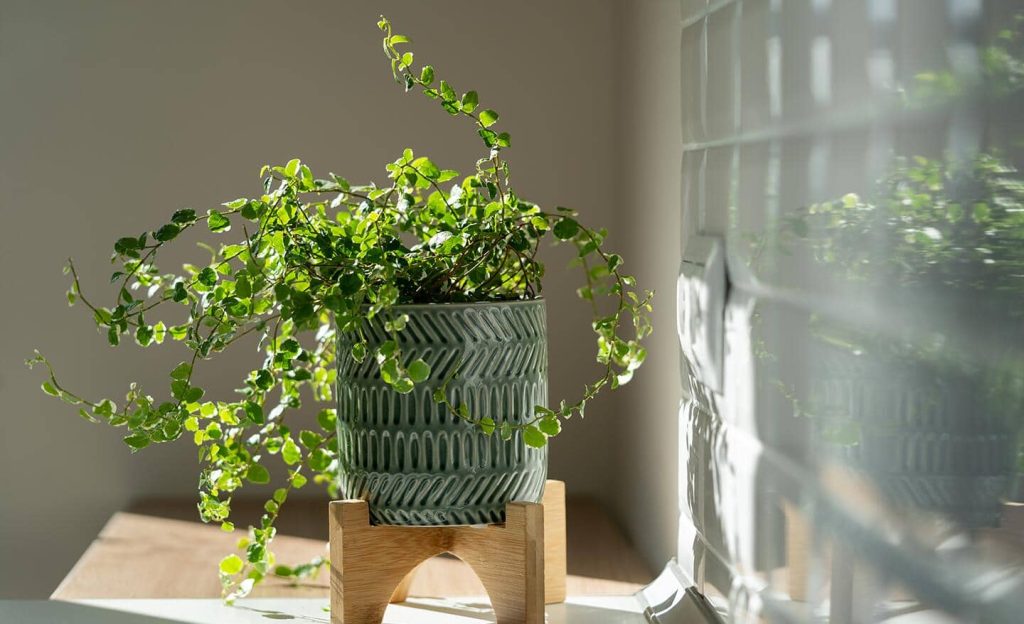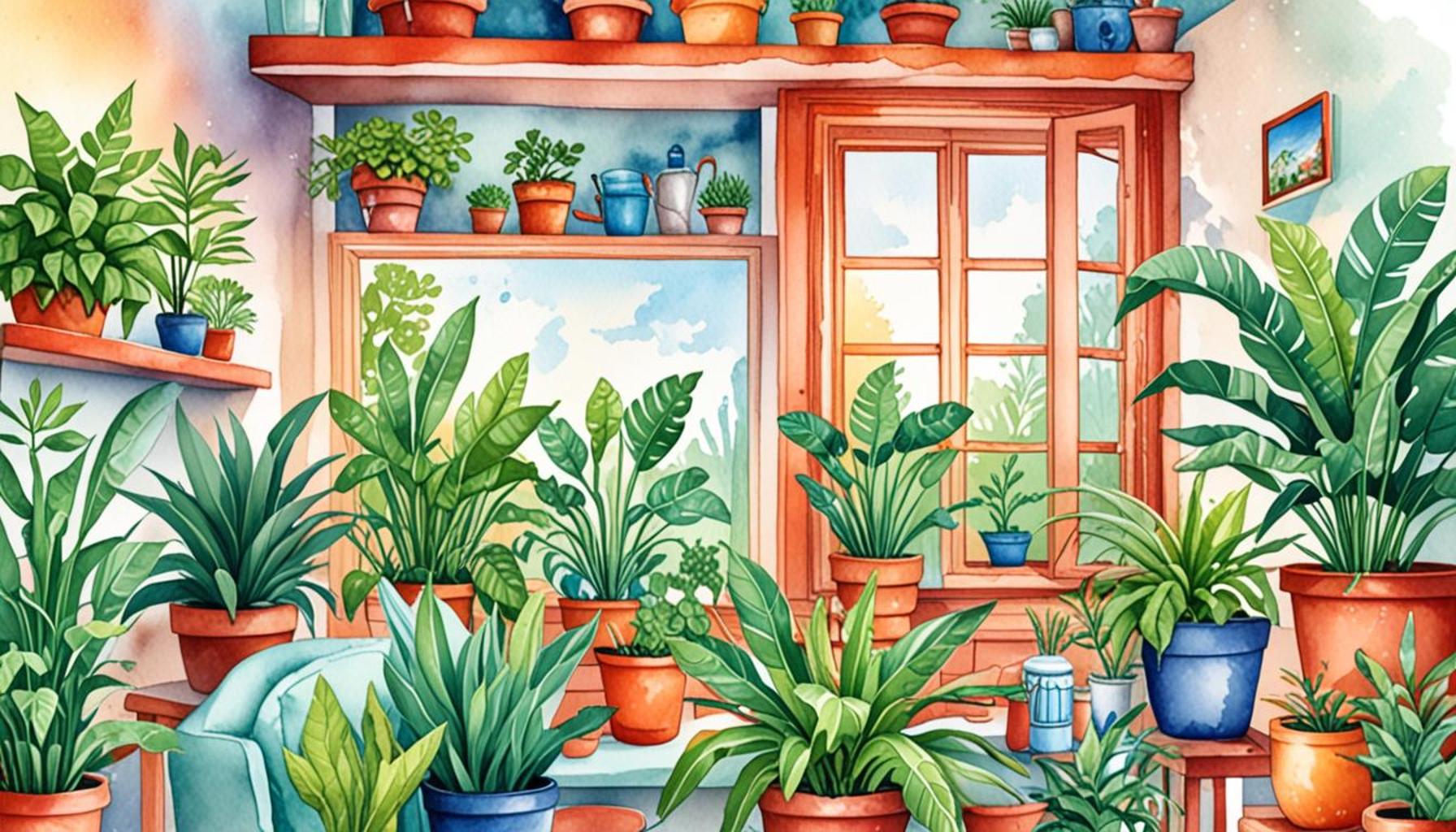Easy Indoor Plants for Beginners Start Your Home Garden Today

Discover the World of Indoor Gardening
Starting an indoor garden can seem intimidating, but it doesn’t have to be. With the right easy indoor plants, anyone can cultivate a vibrant green space inside their home. The benefits of indoor gardening are abundant, including improved air quality, enhanced mood, and a touch of nature to your surroundings. Engaging with plants can reduce stress and increase feelings of well-being, making your space not just visually appealing but also psychologically beneficial.
Here are a few compelling reasons to consider starting your own home garden:
- Low Maintenance: Some plants thrive on neglect, making them perfect for beginners. For instance, the succulent family demands very little care, requiring only occasional watering. This can be especially appealing for those with busy lifestyles or those who might not have a green thumb.
- Aesthetic Appeal: Indoor plants can elevate the decor of any room. A well-placed ficus or a cluster of colorful flowering houseplants can serve as natural decor elements, bringing life and warmth to spaces that might otherwise feel sterile.
- Health Benefits: Plants can boost your mental well-being and purify the air. Research shows that indoor plants can remove indoor pollutants, creating a healthier living environment. Plants like peace lilies and bamboo palms are particularly effective at filtering out toxins.
Popular choices for budding gardeners include:
- Spider Plant: Known for its resilience and easy propagation, the spider plant is a fantastic choice for newcomers. Its cascading, green-and-white striped leaves can brighten any corner of your home.
- Snake Plant: This hardy plant thrives on minimal light and water, making it almost foolproof. Additionally, it is perfect for bedrooms since it releases oxygen at night, contributing to better sleep.
- Pothos: A favorite among indoor gardeners, pothos is hardy and can adapt to various light conditions. Its trailing vines can be showcased on shelves or in hanging baskets, adding a touch of lushness to any room.
In this article, we will explore a variety of easy indoor plants for beginners, providing tips to help you start your garden today. Whether you live in a spacious apartment in New York City or a cozy studio in Austin, creating your green oasis is more achievable than you think. From choosing the right soil to figuring out watering schedules, every aspect of indoor gardening will be covered, ensuring your journey into this enriching hobby is seamless and enjoyable. As you embark on this green adventure, you may find not just a hobby, but a passion that connects you deeper to your living space and nature itself.

SEE ALSO: Click here to read another article
Choosing the Right Plants for Your Space
When embarking on your indoor gardening journey, one of the most crucial decisions you’ll make is selecting the right plants. Understanding your environment is key to ensuring the health and vitality of your indoor garden. Factors such as light availability, humidity levels, and your lifestyle will play significant roles in determining which plants will flourish in your home. Here are some considerations to keep in mind:
- Light Conditions: Assess the natural light in your home. Do you have bright spaces or areas that receive little light? For brightly lit rooms, consider plants such as geraniums or succulents, which thrive in direct sunlight. Conversely, low-light plants like snake plants and ZZ plants can thrive in shaded areas, making them perfect for darker corners.
- Watering Needs: Different plants require varying watering frequencies. Overwatering is one of the most common mistakes for beginners. To avoid this, stick to plants that are forgiving and foster a more laid-back approach to care. Cacti and spider plants prefer drier soil, making them great options if you’re prone to watering a little infrequently.
- Space Availability: Consider how much space you have to work with. Trailing plants like pothos can cascade beautifully down shelves, adding depth and greenery without taking up much ground space. Alternatively, tall plants like rubber trees can serve as stunning focal points in larger areas.
Once you have a grasp of your space, let’s explore some superb easy-care indoor plants that can bring life into your home:
Top Easy Indoor Plants for Beginners
As mentioned earlier, starting with easy indoor plants can simplify your journey into gardening. Here are some popular choices that require minimal effort but offer substantial rewards:
- Aloe Vera: Besides its soothing properties for skin, aloe vera is a hardy succulent that requires little water and can thrive in most indoor climates. It’s a great addition to any kitchen or sunny windowsill.
- Peace Lily: With its elegant white blooms, this plant not only beautifies your space but also purifies the air. The peace lily prefers low to moderate light and only needs watering when the soil feels dry.
- Chinese Evergreen: Ideal for beginners, the Chinese evergreen can adapt to various light conditions, making it suitable for almost any room. Its variegated leaves add a touch of color and intrigue, enhancing your home’s aesthetic.
As you begin to explore the world of easy indoor plants for beginners, remember that choosing the right varieties will set the foundation for a successful and enjoyable gardening experience. As you nurture your plants, you’ll find yourself increasingly connected to your indoor space, allowing your home to transform into a vibrant sanctuary filled with life and color.
| Category | Description |
|---|---|
| Low Maintenance Plants | These plants require minimal care, making them perfect for beginners. They thrive with little watering and indirect light. |
| Aesthetic Appeal | Indoor plants enhance the beauty of your space, promote well-being, and create a calming environment. |
| Air Purification | Many indoor plants naturally purify the air, removing toxins and improving indoor air quality, which is essential for health. |
| Educational Experience | Starting a home garden teaches you valuable skills and knowledge about plant care, nurturing life, and sustainability. |
CHECK OUT: Click here to explore more
Nurturing Your Indoor Plants: Care Tips for Beginners
Once you’ve selected the right plants for your space, the next essential step is to understand how to properly care for them. Caring for indoor plants can seem daunting at first, but with a bit of knowledge and attention, anyone can become a successful indoor gardener. Here are some tips to help you nurture your indoor plants effectively:
- Watering Wisely: The frequency of watering can vary significantly depending on the type of plant and its environment. A general rule is to water when the top inch of soil feels dry. Consider using a moisture meter for more accuracy, as some plants, like succulents, prefer a drier environment, while others, like peace lilies, require consistently moist soil. Remember to ensure that your pots have proper drainage to prevent water from accumulating at the bottom.
- Humidity Levels: Many indoor plants thrive in a humid environment. If you live in a dry climate or during winter months when indoor air can be particularly arid, consider using a humidifier or placing a pebble tray with water under your pots. Additionally, grouping your plants together can create micro-habitats with higher humidity. Ferns and Chinese evergreens will appreciate the extra moisture in the air.
- Fertilizing: Indoor plants require nutrients to grow strong and healthy. Using a balanced, water-soluble fertilizer every few months during the growing season can foster growth. However, over-fertilizing can damage plants, so adhere to the recommendations on the product label. During the winter months, most plants enter a dormant phase and require less fertilization.
Understanding Plant Lifecycles
A great way to enhance your indoor gardening experience is to understand the life cycles of the plants you’ve chosen. Knowing when your plants naturally grow (usually spring and summer) can help you tune into their unique needs. For instance, spider plants produce “pups” or offsets that can be propagated to create new plants. This allows for exponential growth and a flourishing home garden.
Another tip for beginners is to embrace the seasonal changes. Some plants, like pothos and English ivy, will show noticeable changes in growth and appearance based on the time of year. Documenting these changes can help you learn and adapt your care methods, further enhancing your connection to your indoor garden.
Common Indoor Plant Issues
Even the hardiest indoor plants can face issues, and understanding the common problems can help you act quickly. Yellowing leaves often indicate over-watering or poor drainage, while brown tips may be a sign of underwatering or low humidity. Keep an eye out for pests such as spider mites and aphids—regularly inspecting your plants can prevent infestations. If noticed, diluted insecticidal soap or neem oil can be an effective solution to eliminate these pests without harsh chemicals.
As you embrace your new indoor gardening endeavor, remember that patience is key. Observing how your plants respond to different care techniques will ultimately lead you to success. With each green leaf, you’ll cultivate not only a flourishing home but a deeper appreciation for nature and the environment surrounding you. Start your home garden today, and revel in the joy that these easy indoor plants can bring to your life!
SEE ALSO: Click here to read another article
Final Thoughts: Your Indoor Garden Adventure Awaits
Embarking on your journey with easy indoor plants is not only rewarding but also a gateway to experiencing the beauty of nature within your home. By choosing resilient varieties such as snake plants, ZZ plants, and pothos, you’re setting yourself up for success even if you’re a novice. The care tips provided will empower you to nurture these green companions, helping you develop a deeper understanding of their needs and growth patterns.
As you cultivate your indoor garden, remember that patience and observation are crucial. Each plant has its unique personality, and as you learn their specific requirements—whether it’s moisture, humidity, or light—your confidence as a home gardener will flourish. Engaging with your plants can also have therapeutic benefits, reducing stress and enhancing your living space’s air quality.
Moreover, starting your home garden can spark a newfound interest in botany and sustainability, encouraging you to explore more about plant care, propagation, and even eco-friendly gardening practices. Take the time to research and experiment with your favorite indoor plants, and don’t hesitate to connect with local gardening communities or online forums to share your experiences and gain new insights.
So why wait? Now is the perfect time to start your home garden today. Dive into this enriching hobby, and as you watch your plants thrive, you’ll discover the myriad benefits they bring into your life.


